





























© Shuttestock
0 / 30 Fotos
Sierra de Grazalema Natural Park
- Located in the northeastern part of the province of Cádiz, the park encloses the Sierra de Grazalema, a series of mountain ranges that are home to the seriously threatened Egyptian vulture.
© Shutterstock
1 / 30 Fotos
Gran Canaria
- A third of this popular Canary island travel destination is a designated biosphere reserve. Characterized by its great biological diversity, the island features some outstanding natural wonders, including the landmark Roque Nublo (pictured), formed around 4.5 million years ago.
© Shutterstock
2 / 30 Fotos
Cabo de Gata-Níjar Natural Park - Located in the extreme southeast of the Iberian Peninsula—the most arid part of Europe (the cape is subject to a climate influenced by the Sahara Desert)—the reserve is the domain of numerous endemic plant species and a diverse range of birdlife, including the rare Audouin's gull.
© iStock
3 / 30 Fotos
Bardenas Reales
- This is Spain's badlands, a semi-desert region in Navarre province. Water and wind erosion has created some fantastical shapes across the arid central plateau. Human activity is scarce, with traditional agriculture and livestock farming the only real sustainable industries.
© Shutterstock
4 / 30 Fotos
Urdaibai estuary
- Hugging the Bay of Biscay coast in Spain's Basque Country, this is one of the most important wetland areas in the Iberian Peninsula. The estuary is a prime habitat for a wide variety of migratory and resident birds.
© Shutterstock
5 / 30 Fotos
Menorca
- One of the Balearic islands, Menorca—declared an entire biosphere reserve—sits under the migration route of many different bird species. The island is rich in wild flowers, with over 900 species of flowering plant recorded. Early human settlement is characterized by an impressive collection of megalithic stone monuments.
© Shutterstock
6 / 30 Fotos
Sierra Nevada National Park
- Stretching through the provinces of Granada, Almería, and Málaga, in Andalusia, this is Spain's largest national park. Wild and remote, the sierra's flora and fauna include the Spanish ibex, Bonelli's eagle, and the snow star, one of the most emblematic plants of the region.
© Shutterstock
7 / 30 Fotos
Sierra de las Nieves Natural Park
- Peppered with large caves and deep shafts, the park, located behind Marbella, centers on La Torrecilla, which at 6,295 ft (1,919 m) is the highest point in the Sierra de las Nieves range.
© Shutterstock
8 / 30 Fotos
Terras do Miño
- This traditional Galician cultural landscape includes the river and lagoon ecosystems of Parga-Ladra-Támoga, as well as the mountain landscapes of the Serra do Xistral.
© Shutterstock
9 / 30 Fotos
Picos de Europa National Park
- Set in the spectacular Picos de Europa mountain range, this park was created in 1918 and centers on the Lakes of Covadonga (two glacial lakes located in the Asturias region of Spain).
© Shutterstock
10 / 30 Fotos
Sierra de Francia
- This barren mountain range located 44 mi (70 km) from the city of Salamanca contains the Iberian lynx—one of the rarest and most endangered species in Western Europe.
© Shutterstock
11 / 30 Fotos
Terres de l’Ebre
- Six different landscape areas constitute the Terres de l'Ebre (Ebro river basin): sand plains, marshes, deltas, wetlands, mountains, and valleys. The biosphere reserve is also renowned for its ancient rock art, found deep within caves set in and around the area.
© Shutterstock
12 / 30 Fotos
Isla de El Hierro - The smallest island of the whole Canary archipelago boasts an exceptional wealth of marine life. Endemic species of flora and fauna include the El Hierro giant lizard, once thought to be extinct.
© iStock
13 / 30 Fotos
Ordesa y Monte Perdido National Park - The Pyrenean chamois, alpine marmot, and the tiny Pyrenean desman, or water vole, call this park home. So did the regal Pyrenean ibex, which was sadly declared extinct in 2000.
© iStock
14 / 30 Fotos
Doñana National Park - Doñana National Park is one of the world's most important areas of wetland and is sited within the provinces of Huelva, Cádiz, and Seville. Doñana is one of the last refuges for endangered species such as the Iberian lynx and the Spanish imperial eagle.
© Shutterstock
15 / 30 Fotos
Fuerteventura - An almost complete lack of tree cover characterizes the dry landscape of this island, the oldest and second largest of the Canary Islands. Besides some extraordinary volcanic features, the island also contains important archaeological sites.
© iStock
16 / 30 Fotos
Monfragüe National Park - This park, located in the country's Extremadura province, is especially known for its large colonies of birds of prey, which gather in spectacular formation at places like Mirador del Salto del Gitano (pictured).
© iStock
17 / 30 Fotos
Marismas del Odiel - One third of the whole European nesting population of spoonbills (pictured, foreground) is found at the Marismas del Odiel Biosphere Reserve, located north-west of Cádiz.
© Shutterstock
18 / 30 Fotos
Macizo de Anaga - Declared a biosphere reserve in 2015, Macizo de Anaga on the island of Tenerife in the Canary Islands has the highest concentration of endemic species found anywhere in Europe, according to EFEVerde.
© iStock
19 / 30 Fotos
Montseny Massif - Rising north of Barcelona and part of the Catalan coastal mountain range, the park marks the transition zone between the Mediterranean and Atlantic regions. Among the fauna associated with this part of the world is the critically endangered Montseny brook newt, a species of salamander.
© Public Domain
20 / 30 Fotos
La Palma - Described as a miniature continent, the Canary island of La Palma features incredible laurel tree forests and the 7, 959-ft (2, 426-m) Roque de los Muchachos. Unique birds species include Bolle’s pigeon and the white-tailed laurel pigeon.
© Shutterstock
21 / 30 Fotos
Los Ancares Leoneses - This sparsely inhabited district in northern Spain is typified by Atlantic mountains—the domain of the brown bear, among other endangered animals.
© Shutterstock
22 / 30 Fotos
Sierras de Cazorla, Segura y Las Villas Natural Park - This is the largest protected area in Spain, a landscape embroidered with peaks, valleys, rocky gorges, and vertical cliffs. Notable for huge swathes of forest, the park's verdant environment is nourished by a continental Mediterranean climate.
© Shutterstock
23 / 30 Fotos
Lanzarote - Another Canary island declared a biosphere reserve, Lanzarote features the amazing Timanfaya National Park, known for its profusion of otherworldy craters.
© Shutterstock
24 / 30 Fotos
Mancha Húmeda - Mancha Húmeda comprises two national parks and the Lake Alcázar, a magnet for an astonishing variety of aquatic birds. The reserve is situated in La Mancha in central Spain.
© Shutterstock
25 / 30 Fotos
Somiedo Natural Park
- Encompassing an area known for its traditional farming methods, the park's high ground is also a stronghold for the Cantabrian brown bear.
© Shutterstock
26 / 30 Fotos
Redes Natural Park
- The endangered Cantabrian brown bear can also be found roaming through this park. Located in northern Spain, Redes is a designated Special Protection Area for birds.
© Shutterstock
27 / 30 Fotos
Las Dehesas de Sierra Morena
- This is a vast territory in Andalusia that encompasses the Dehesa—savannah-like grasslands scattered with ancient oak trees and noted by UNESCO as a traditional and truly Iberian landscape.
© Shutterstock
28 / 30 Fotos
Cuenca Alta del Río Manzanares
- The Manzanares River's upper basin falls within this reserve, the environment of which is a spectacular geological landscape of granite outcrops and aromatic Mediterranean vegetation.
© Shutterstock
29 / 30 Fotos
© Shuttestock
0 / 30 Fotos
Sierra de Grazalema Natural Park
- Located in the northeastern part of the province of Cádiz, the park encloses the Sierra de Grazalema, a series of mountain ranges that are home to the seriously threatened Egyptian vulture.
© Shutterstock
1 / 30 Fotos
Gran Canaria
- A third of this popular Canary island travel destination is a designated biosphere reserve. Characterized by its great biological diversity, the island features some outstanding natural wonders, including the landmark Roque Nublo (pictured), formed around 4.5 million years ago.
© Shutterstock
2 / 30 Fotos
Cabo de Gata-Níjar Natural Park - Located in the extreme southeast of the Iberian Peninsula—the most arid part of Europe (the cape is subject to a climate influenced by the Sahara Desert)—the reserve is the domain of numerous endemic plant species and a diverse range of birdlife, including the rare Audouin's gull.
© iStock
3 / 30 Fotos
Bardenas Reales
- This is Spain's badlands, a semi-desert region in Navarre province. Water and wind erosion has created some fantastical shapes across the arid central plateau. Human activity is scarce, with traditional agriculture and livestock farming the only real sustainable industries.
© Shutterstock
4 / 30 Fotos
Urdaibai estuary
- Hugging the Bay of Biscay coast in Spain's Basque Country, this is one of the most important wetland areas in the Iberian Peninsula. The estuary is a prime habitat for a wide variety of migratory and resident birds.
© Shutterstock
5 / 30 Fotos
Menorca
- One of the Balearic islands, Menorca—declared an entire biosphere reserve—sits under the migration route of many different bird species. The island is rich in wild flowers, with over 900 species of flowering plant recorded. Early human settlement is characterized by an impressive collection of megalithic stone monuments.
© Shutterstock
6 / 30 Fotos
Sierra Nevada National Park
- Stretching through the provinces of Granada, Almería, and Málaga, in Andalusia, this is Spain's largest national park. Wild and remote, the sierra's flora and fauna include the Spanish ibex, Bonelli's eagle, and the snow star, one of the most emblematic plants of the region.
© Shutterstock
7 / 30 Fotos
Sierra de las Nieves Natural Park
- Peppered with large caves and deep shafts, the park, located behind Marbella, centers on La Torrecilla, which at 6,295 ft (1,919 m) is the highest point in the Sierra de las Nieves range.
© Shutterstock
8 / 30 Fotos
Terras do Miño
- This traditional Galician cultural landscape includes the river and lagoon ecosystems of Parga-Ladra-Támoga, as well as the mountain landscapes of the Serra do Xistral.
© Shutterstock
9 / 30 Fotos
Picos de Europa National Park
- Set in the spectacular Picos de Europa mountain range, this park was created in 1918 and centers on the Lakes of Covadonga (two glacial lakes located in the Asturias region of Spain).
© Shutterstock
10 / 30 Fotos
Sierra de Francia
- This barren mountain range located 44 mi (70 km) from the city of Salamanca contains the Iberian lynx—one of the rarest and most endangered species in Western Europe.
© Shutterstock
11 / 30 Fotos
Terres de l’Ebre
- Six different landscape areas constitute the Terres de l'Ebre (Ebro river basin): sand plains, marshes, deltas, wetlands, mountains, and valleys. The biosphere reserve is also renowned for its ancient rock art, found deep within caves set in and around the area.
© Shutterstock
12 / 30 Fotos
Isla de El Hierro - The smallest island of the whole Canary archipelago boasts an exceptional wealth of marine life. Endemic species of flora and fauna include the El Hierro giant lizard, once thought to be extinct.
© iStock
13 / 30 Fotos
Ordesa y Monte Perdido National Park - The Pyrenean chamois, alpine marmot, and the tiny Pyrenean desman, or water vole, call this park home. So did the regal Pyrenean ibex, which was sadly declared extinct in 2000.
© iStock
14 / 30 Fotos
Doñana National Park - Doñana National Park is one of the world's most important areas of wetland and is sited within the provinces of Huelva, Cádiz, and Seville. Doñana is one of the last refuges for endangered species such as the Iberian lynx and the Spanish imperial eagle.
© Shutterstock
15 / 30 Fotos
Fuerteventura - An almost complete lack of tree cover characterizes the dry landscape of this island, the oldest and second largest of the Canary Islands. Besides some extraordinary volcanic features, the island also contains important archaeological sites.
© iStock
16 / 30 Fotos
Monfragüe National Park - This park, located in the country's Extremadura province, is especially known for its large colonies of birds of prey, which gather in spectacular formation at places like Mirador del Salto del Gitano (pictured).
© iStock
17 / 30 Fotos
Marismas del Odiel - One third of the whole European nesting population of spoonbills (pictured, foreground) is found at the Marismas del Odiel Biosphere Reserve, located north-west of Cádiz.
© Shutterstock
18 / 30 Fotos
Macizo de Anaga - Declared a biosphere reserve in 2015, Macizo de Anaga on the island of Tenerife in the Canary Islands has the highest concentration of endemic species found anywhere in Europe, according to EFEVerde.
© iStock
19 / 30 Fotos
Montseny Massif - Rising north of Barcelona and part of the Catalan coastal mountain range, the park marks the transition zone between the Mediterranean and Atlantic regions. Among the fauna associated with this part of the world is the critically endangered Montseny brook newt, a species of salamander.
© Public Domain
20 / 30 Fotos
La Palma - Described as a miniature continent, the Canary island of La Palma features incredible laurel tree forests and the 7, 959-ft (2, 426-m) Roque de los Muchachos. Unique birds species include Bolle’s pigeon and the white-tailed laurel pigeon.
© Shutterstock
21 / 30 Fotos
Los Ancares Leoneses - This sparsely inhabited district in northern Spain is typified by Atlantic mountains—the domain of the brown bear, among other endangered animals.
© Shutterstock
22 / 30 Fotos
Sierras de Cazorla, Segura y Las Villas Natural Park - This is the largest protected area in Spain, a landscape embroidered with peaks, valleys, rocky gorges, and vertical cliffs. Notable for huge swathes of forest, the park's verdant environment is nourished by a continental Mediterranean climate.
© Shutterstock
23 / 30 Fotos
Lanzarote - Another Canary island declared a biosphere reserve, Lanzarote features the amazing Timanfaya National Park, known for its profusion of otherworldy craters.
© Shutterstock
24 / 30 Fotos
Mancha Húmeda - Mancha Húmeda comprises two national parks and the Lake Alcázar, a magnet for an astonishing variety of aquatic birds. The reserve is situated in La Mancha in central Spain.
© Shutterstock
25 / 30 Fotos
Somiedo Natural Park
- Encompassing an area known for its traditional farming methods, the park's high ground is also a stronghold for the Cantabrian brown bear.
© Shutterstock
26 / 30 Fotos
Redes Natural Park
- The endangered Cantabrian brown bear can also be found roaming through this park. Located in northern Spain, Redes is a designated Special Protection Area for birds.
© Shutterstock
27 / 30 Fotos
Las Dehesas de Sierra Morena
- This is a vast territory in Andalusia that encompasses the Dehesa—savannah-like grasslands scattered with ancient oak trees and noted by UNESCO as a traditional and truly Iberian landscape.
© Shutterstock
28 / 30 Fotos
Cuenca Alta del Río Manzanares
- The Manzanares River's upper basin falls within this reserve, the environment of which is a spectacular geological landscape of granite outcrops and aromatic Mediterranean vegetation.
© Shutterstock
29 / 30 Fotos
Reintroducing Spain, home to the most biosphere reserves in Europe
Where travel and tourism go hand-in-hand with nature and conservation
© Shutterstock
The UNESCO World Network of Biosphere Reserves (WNBR) covers internationally designated protected areas, each known as a biosphere reserve. A biosphere reserve is an ecosystem with flora and fauna of unusual scientific and natural interest encompassing terrestrial and coastal ecosystems, as described by the Paris-based United Nations Educational, Scientific, and Cultural Organization. As of 2019, there are 686 biosphere reserves in 122 countries.
Launched in 1970 as the UNESCO "Man and the Biosphere" (MAB) Programme, MAB's original aim was to establish a coordinated world network of sites representing the main ecosystems of the planet. Later, MAB was charged with establishing a scientific basis for the improvement of relationships between people and their environments. To that end, biosphere reserves were created to demonstrate and promote innovative approaches to living and working in harmony with nature, and to achieve a sustainable balance between conserving natural ecosystems and biodiversity and fostering sound economic development.
Spain has one of the highest numbers of biosphere reserves in Europe: presently 43 located on the mainland and on the Balearic and Canary islands. Essentially places to understand and manage changes and interactions between social and ecological systems, including conflict prevention and management of biodiversity, these reserves are found along the length and breadth of the country.
Many have been created out of existing natural parks. The Sierra de Grazalema Natural Park in Cádiz province, for example, became a biosphere reserve in 1977, ostensibly to encourage forestry activities using wood and cork, open-range cattle and goat-raising, and the manufacture of wool and leather handicrafts. At the same time, the park was promoted as a rural tourism destination and a place to spot birds like the golden eagle and the Griffon vulture.
Fast-forward to 2015, and the Macizo de Anaga Biosphere Reserve on Tenerife has the highest concentration of endemic species found anywhere in Europe. The reserve consists of four protected natural areas—a rural park and three integral natural reserves. Around 20,000 people live within the reserve, many employed in historic economic activities, including forestry, fishing, and farming.
But a substantial proportion are now employed in the tourism industry. The reserve therefore represents an opportunity to promote this cultural heritage combined with the development of tourism in a sustainable manner.
To get an idea of Spain's incredibly varied and picture-perfect collection of biosphere reserves, click through the following gallery and learn more about these beautiful, but fragile, ecosystems.
RECOMMENDED FOR YOU
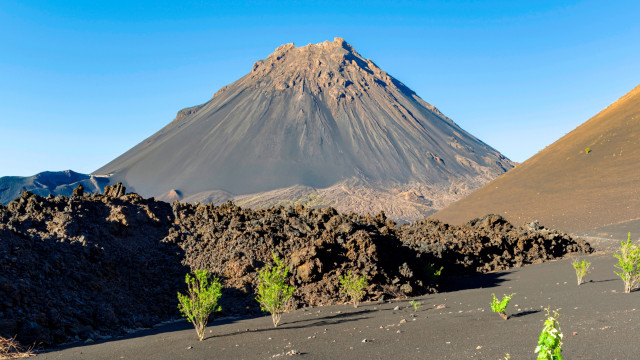

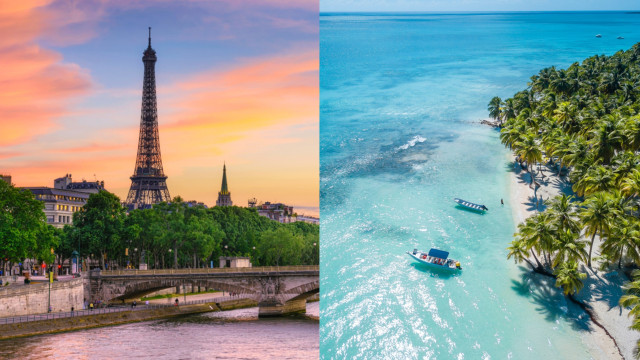


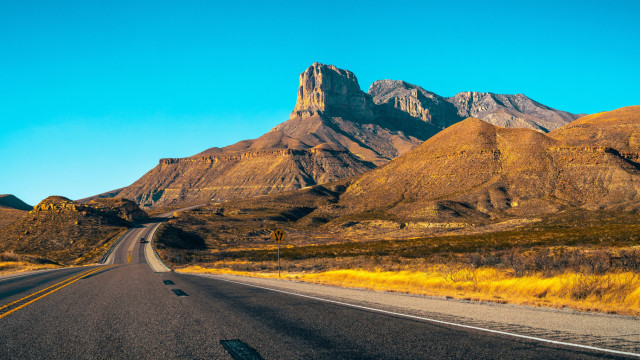








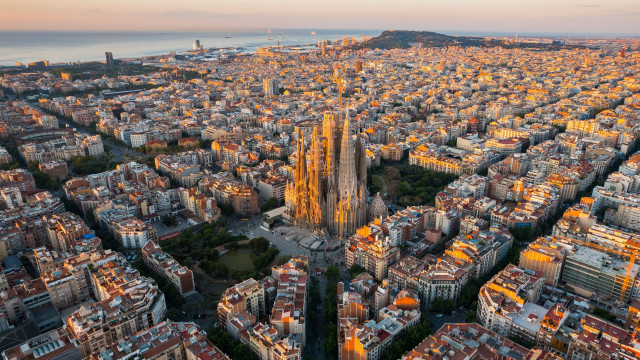





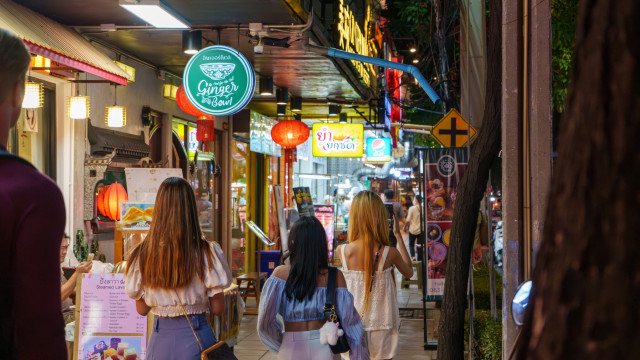
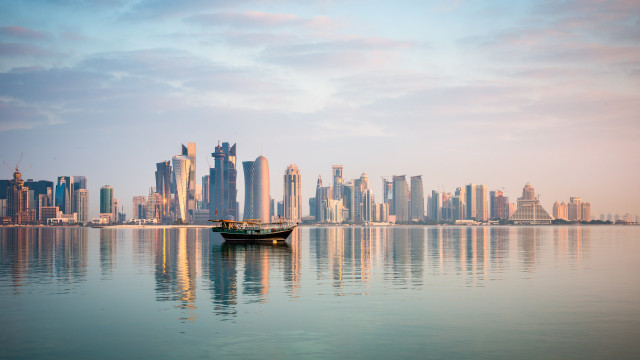




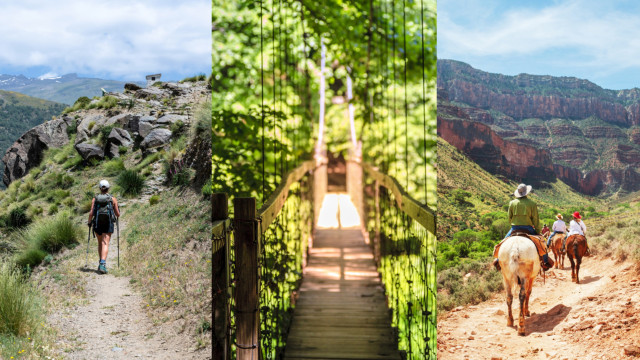
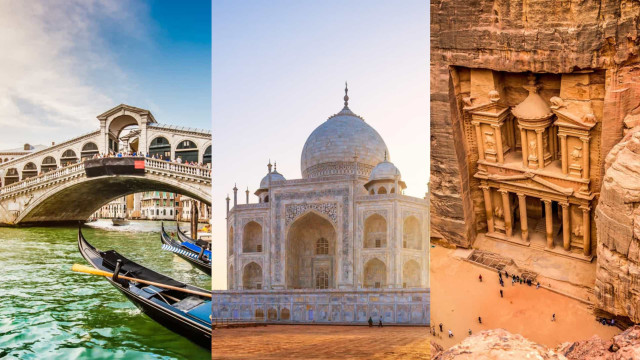


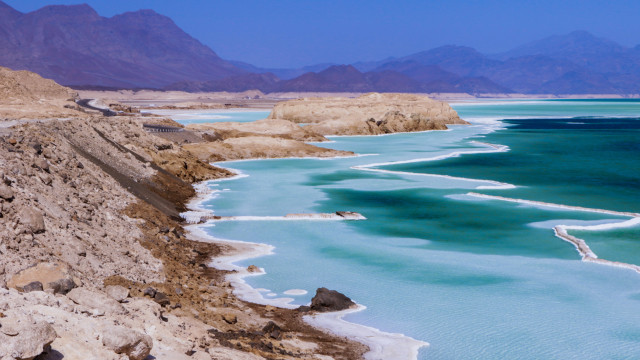


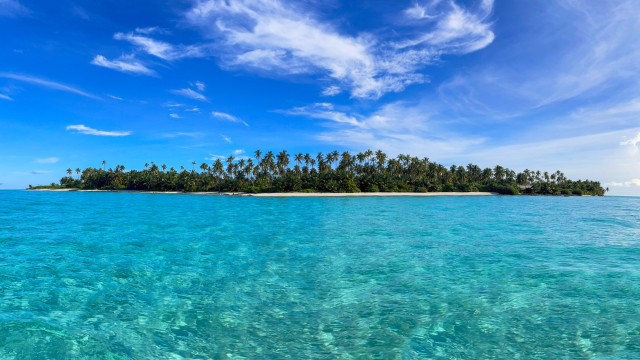
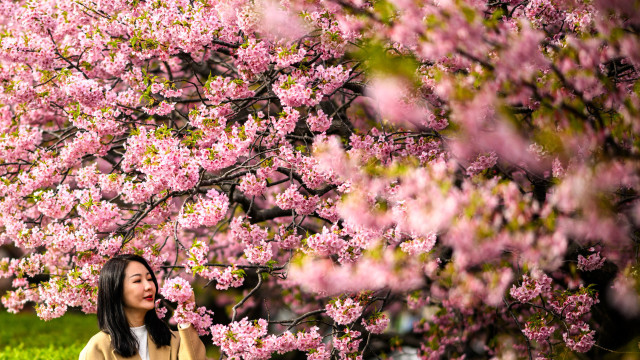

MOST READ
- Last Hour
- Last Day
- Last Week
-
1
CELEBRITY Relationships
-
2
LIFESTYLE Throwback
-
3
LIFESTYLE Catholicism
-
4
LIFESTYLE Home remedies
-
5
LIFESTYLE Putin
-
6
FOOD Fine dining
-
7
LIFESTYLE Emotions
-
8
TRAVEL Nations
-
9
LIFESTYLE History
-
10
LIFESTYLE Emergency








